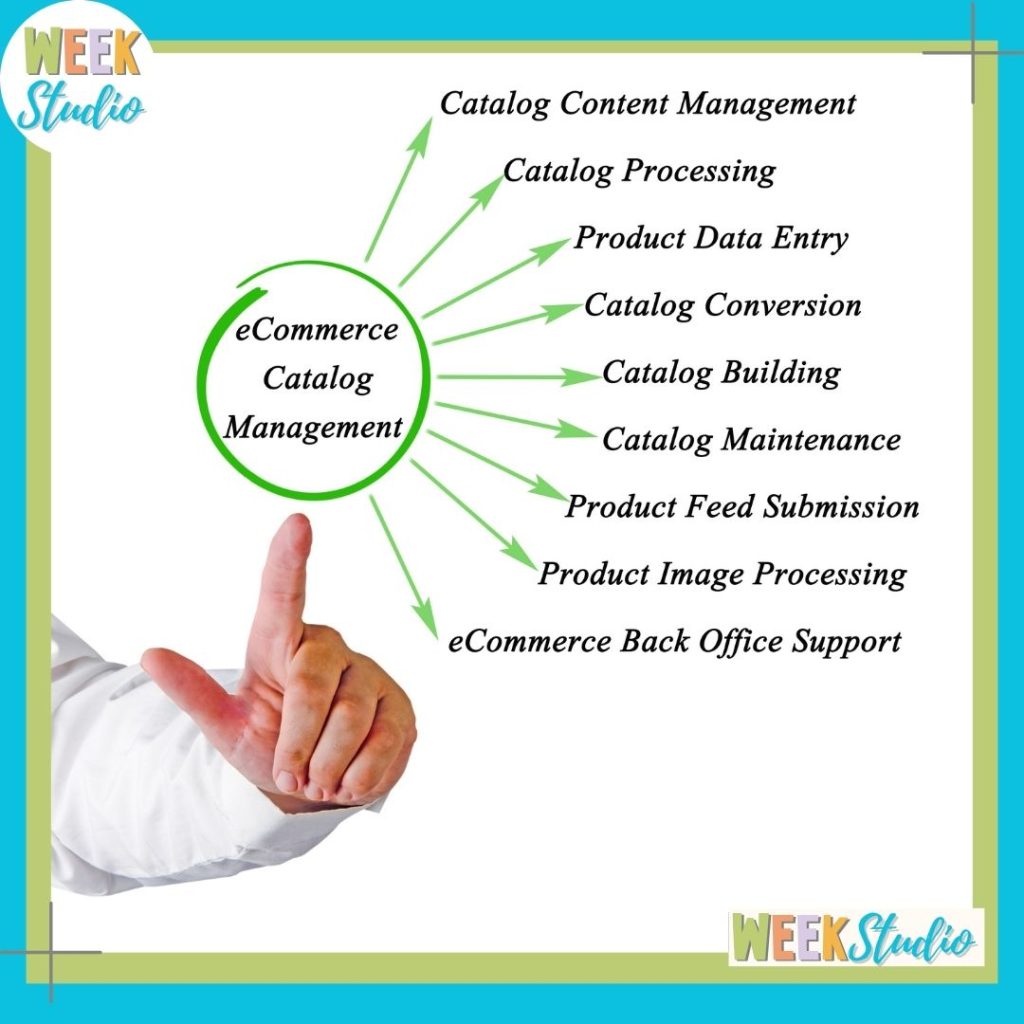In the vast realm of ecommerce, where the digital marketplace is ever-expanding, the significance of unique and engaging content cannot be overstated. One of the hurdles that online businesses frequently encounter is the issue of duplicate content. As search engines become more sophisticated, the need to understand and address duplicate content concerns becomes paramount for maintaining a competitive edge.
This article delves into the intricacies of duplicate content in ecommerce, shedding light on its implications, challenges, and, most importantly, how to navigate this terrain while keeping your online store optimized for search engines and user satisfaction. Let’s embark on a journey to unravel the secrets of steering clear from duplicate content pitfalls in the ecommerce landscape.
Why Is Duplicate Content A Concern For Ecommerce Websites?

Duplicate content is a concern for ecommerce websites because it can impact the site’s search engine optimization (SEO). When two or more pages on a website contain the same or very similar content, the site’s search engine ranking can be reduced because the search engine algorithms see the pages as being less important than the original page. This can impact a website’s traffic and sales.
There are a few ways to avoid duplicate content issues for ecommerce websites. One is to use a canonical tag on pages with duplicate content. This tag tells the search engine algorithms which page is the original, and the search engine will rank that page higher. Another way to avoid duplicate content is to use a 301 redirect. This tells the search engine that a page has been moved, and the search engine will then redirect users to the new page.
How Can Unique Product Descriptions Enhance Seo For Ecommerce Businesses?
If you’re running an ecommerce business, then you know that search engine optimization (SEO) is essential to your success. After all, if potential customers can’t find your website, then they can’t buy your products! One of the best ways to improve your SEO is to create unique product descriptions for each of your items. This will help your website rank higher in search engine results pages (SERPs), and it will also help customers learn more about your products.

They Increase Click-Through Rates When potential customers see your products in search engine results pages, the descriptions you provide will be one of the deciding factors in whether they click through to your website or not. If your product descriptions are boring or generic, then people are likely to skip over them. However, if your descriptions are witty, clever, and informative, then people will be more likely to click through to your website.
One way to create witty and clever product descriptions is to use statistics and facts about your products. For example, if you are selling a product that is made from a natural material, you could mention that the material is environmentally friendly. If you are selling a product that is made in the USA, you could mention that the product is made in the USA. If you are selling a product that is a bestseller, you could mention that the product is a bestseller.
Another way to create witty and clever product descriptions is to use humor. For example, you could make a joke about how the product is the best thing since sliced bread. You could also make a joke about how the product is the cure for the common cold.
What Role Do 301 Redirects Play In Handling Duplicate Content?
Duplicate content is a problem because it can dilute a site’s search engine ranking for its most important keywords. When Google or another search engine encounters the same content on two or more different websites, it can’t determine which site is the most relevant to a particular search and so it penalizes all of them.

There are a few ways to handle duplicate content. One is to use the canonical tag, which tells the search engine which version of the content is the original. Another is to use a 301 redirect, which tells the search engine that the content has been permanently moved to a different location. This is the preferred method because it passes along the original site’s ranking to the new location.
Is It Possible To Completely Eliminate Duplicate Content In Ecommerce?
Duplicate content is a huge issue for ecommerce businesses. Not only is it frustrating for customers when they can’t find the product they’re looking for, but it can also have a negative impact on your SEO. Fortunately, there are a few ways to reduce the amount of duplicate content on your site.
One way to reduce duplicate content is by using canonical URLs. Canonical URLs are pages that contain the same content as other pages on your site, but are designated as the primary version. This tells search engines that the canonical URL is the original version of the page, and that the other versions should be treated as duplicates.
Another way to reduce duplicate content is by using 301 redirects. 301 redirects are pages that have been permanently moved to a new location. When a search engine crawls your site, it will follow the redirects and index the new pages. This will help to reduce the amount of duplicate content on your site.
How Often Should Ecommerce Businesses Conduct Content Audits To Identify Duplicate Content?

Duplicate content can negatively impact your website’s SEO, so it’s important to conduct content audits on a regular basis to identify and address any instances of duplicate content. There is no one definitive answer to the question of how often you should conduct content audits. Some factors to consider include the size and complexity of your website, the number of pages on your website, the number of new and updated pages on your website, and the frequency of changes to your website’s content.
Generally, it’s a good idea to audit your website’s content at least once a year. However, if your website is updated frequently or you have a large number of pages, you may need to audit your content more often. When conducting a content audit, you should examine all instances of duplicate content on your website, including duplicate titles, meta descriptions, H1 tags, and content. You should also check for duplicate content across your website’s internal linking structure.
Duplicate content can occur for a number of reasons, such as:
- unintentional duplication, such as when two or more pages have the same content but are not linked to each other
- intentional duplication, such as when a marketer copies and pastes content from one page to another in an attempt to improve SEO
- pagination, such as when a website breaks a long article or blog post into multiple pages
- reprinting, such as when a website republishes content from another website
- scrapers, such as when a website steals content from another website
While duplicate content can have a negative impact on your website’s SEO, there are a number of ways to address the issue. You can either remove the duplicate content or consolidate it into a single page. You can also use canonical tags to tell search engines which page is the original, and you can use 301 redirects to redirect users and search engines to the original page.
Tools and Technologies for Duplicate Content Detection

In the ever-evolving digital landscape, staying ahead of duplicate content issues necessitates leveraging cutting-edge tools and technologies. The following section explores some invaluable resources that empower ecommerce businesses in identifying and mitigating duplicate content effectively.
Content Duplication Checkers
- Copyscape: A renowned plagiarism checker that helps identify duplicate content across the web. It’s an indispensable tool for ensuring the originality of your product descriptions and website copy.
- Siteliner: This tool provides a comprehensive analysis of your website’s content, highlighting duplicate content issues and offering insights into page-wise duplication percentages.
Google Search Console
- HTML Improvements Section: Within Google Search Console, the HTML Improvements section identifies duplicate meta descriptions and title tags, providing actionable insights to enhance your site’s SEO.
- URL Inspection Tool: This tool allows you to check a specific URL for any indexing issues, including duplicate content concerns. It provides a detailed breakdown of how Googlebot views your page.
Plagiarism Prevention Tools
- Grammarly: Beyond its grammar-checking prowess, Grammarly’s plagiarism checker can help ensure your content is not inadvertently mirroring existing online material.
- Quetext: A user-friendly plagiarism detection tool that scans your content for potential matches across the web, offering a side-by-side comparison for easy identification.
Crawling and Site Audit Tools
- Screaming Frog SEO Spider: This tool conducts in-depth website crawls, flagging duplicate content issues, and providing insights into URL structures that may contribute to duplication.
- Ahrefs Site Audit: A comprehensive site audit tool that not only identifies duplicate content but also offers actionable suggestions to enhance your site’s overall SEO health.
Content Management Systems (CMS) Features
- Canonical Tags: Most modern CMS platforms, such as WordPress and Shopify, allow for the implementation of canonical tags. These tags signal to search engines the preferred version of a page, mitigating duplicate content concerns.
- Version Control: Utilize version control features within your CMS to track content changes, ensuring that updates don’t inadvertently lead to duplicate content issues.
By integrating these tools and technologies into your ecommerce arsenal, you empower your business to proactively detect and address duplicate content, fostering a digital environment that is not only search engine-friendly but also enhances the user experience. As technology continues to advance, staying vigilant with these tools becomes instrumental in maintaining a competitive edge in the ecommerce landscape.
Conclusion

In the intricate dance of ecommerce, where every click matters, steering clear of duplicate content is paramount. The impact on SEO and user experience cannot be overstated. By embracing effective product descriptions, canonicalization strategies, clean URL structures, 301 redirects, regular audits, and educating your teams, you fortify your ecommerce fortress against the pitfalls of duplication.
Remember, the goal is not just to please search engines but to provide a seamless and enriching experience for your users. As you navigate the digital marketplace, let the uniqueness of your content be the beacon that guides both search engines and customers to your virtual storefront.
